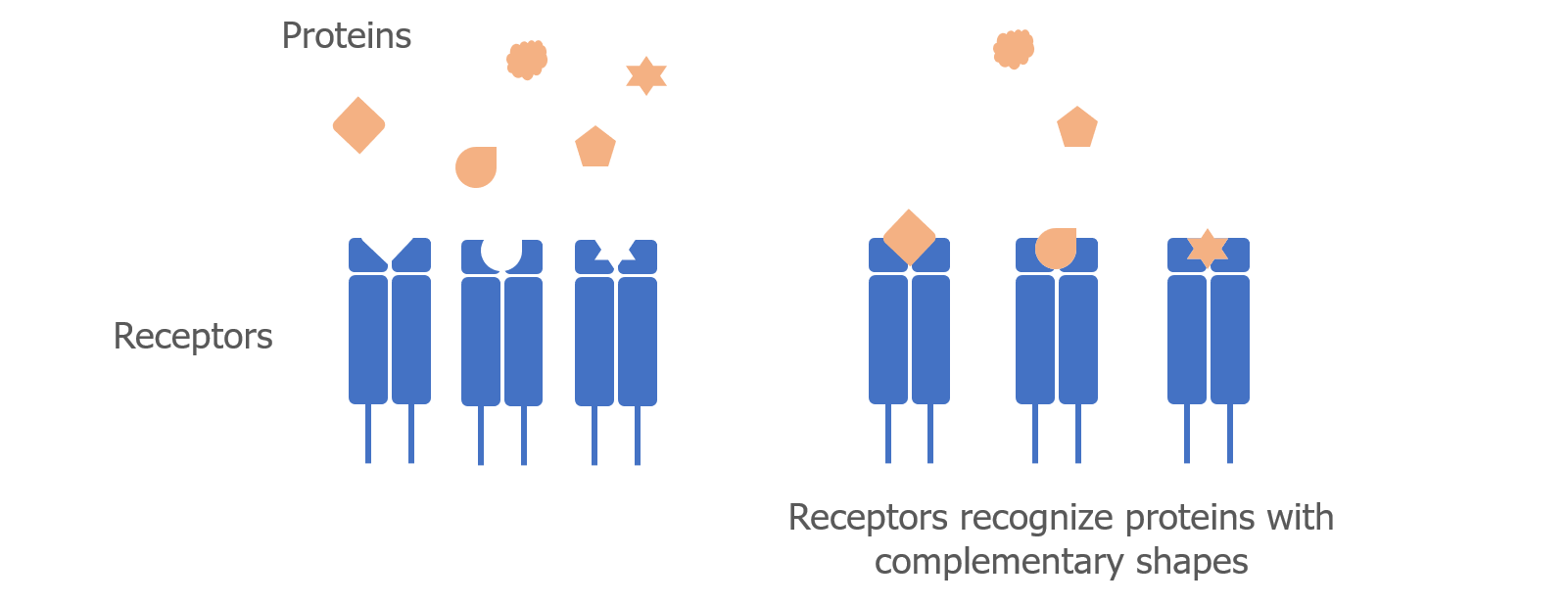Immune cells obviously don’t have eyes or ears to see or hear trespassing pathogens. What they do have are proteins called receptors that interact with other proteins. The receptors have unique shapes that recognize proteins with complimentary shapes—similar to a lock that can only be opened by a specific key.

An immune response begins when an immune cell receptor (the “lock”) interacts with a protein from a pathogen (the “key”). A protein that is recognized by an immune cell receptor and triggers an immune response is called an antigen.
The receptors on innate immune cells recognize common proteins that are found on several types of pathogens, which gives them the flexibility to recognize more than one type of invader.
In contrast, the receptors on adaptive immune cells (T cells and B cells) recognize unique proteins that only certain types of pathogens have. This allows the immune system to “remember” a specific type of pathogen and to quickly begin an immune response if the pathogen infects the body again.
After the pathogen has been removed, the immune cells become deactivated and return to their normal state.
Many different diseases are caused by a malfunction of the normal immune response. This can happen in several ways. For example, immune cells may:
- Fail to recognize a certain pathogen, which leads to chronic infection.
- Mistakenly recognize a normal protein, which results in autoimmune disease.
- Fail to “turn off” the immune response, which leads to chronic inflammation.
The next section will describe in more detail what goes wrong in autoimmune disease.
GLOSSARY
Adaptive immune cells – Immune cells that recognize specific pathogens. Allow the immune system to “remember” pathogens in case of future infection.
Antigen – A protein that is recognized by an immune cell receptor and triggers an immune response.
Autoimmune disease – May occur when the immune system mistakenly recognizes a normal protein in the body as an invader and creates an immune response.
Immune cells – Specialized white blood cells (also called leukocytes) that fight infection.
Innate immune cells – Nonspecific immune cells. Recognize many pathogens. First responders to infection.
Pathogens – Bacteria and viruses that can cause disease.
Receptor – A protein that is located on the surface of a cell and interacts with other proteins. Receptors act as the “locks” that recognize specific pathogen “keys”.
RELATED
Celiac Disease: Biology Basics
May 17, 2018What Happens In the Small Intestine?
May 6, 2018B Cells
May 6, 2018What Role Does Tissue Transglutaminase (tTG) Play in Celiac Disease?
May 6, 2018Share this Post
